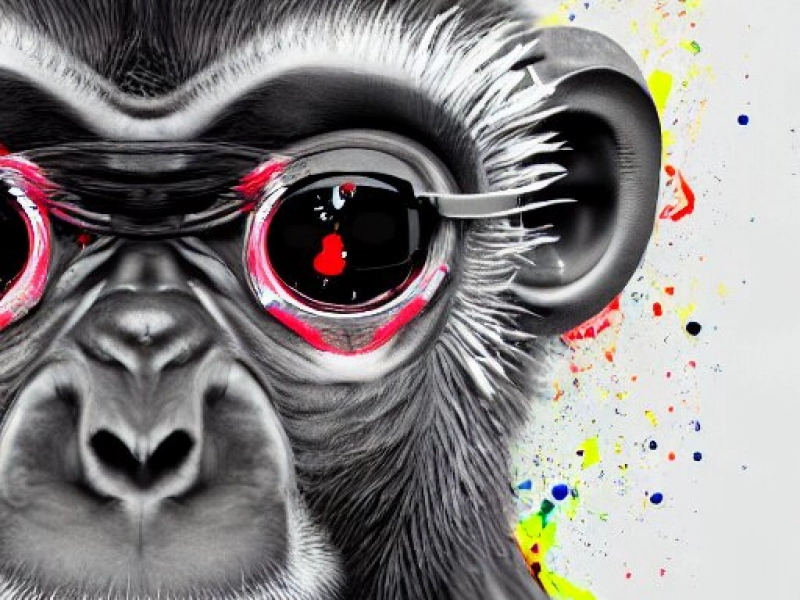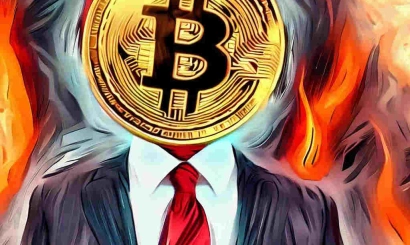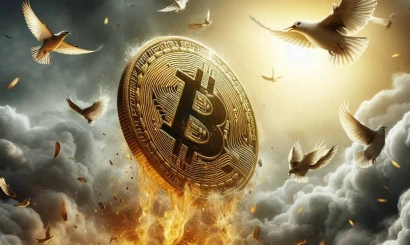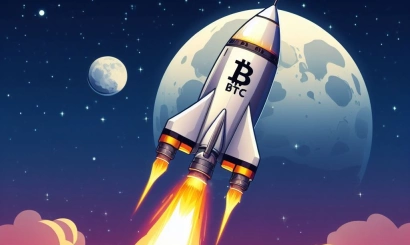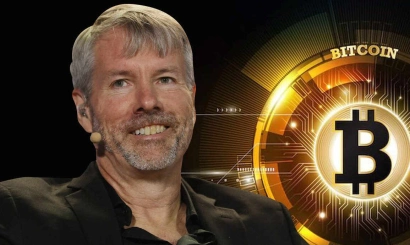Bitcoin has an NFT. Who makes money on it?
The developers of the Ordinals project have figured out how to create NFT in the bitcoin blockchain, and a market is already forming around the new trend
A new protocol called Ordinals allows for the addition of non-exchangeable tokens (NFT) to bitcoin transactions, effectively creating an NFT market within the largest cryptocurrency network by capitalization.
The proprietary technology of the Ordinals project, launched in January, allows images and other types of data to be "inscribed" directly into "satoshis" (the smallest bitcoin units of 0.00000001 BTC value) in the bitcoin blockchain, without requiring a separate token or branch network (sidechain) to do so. Each "inscription" is considered a "digital artifact" because it is said to be immutable and forever preserved in the blockchain.
Metadata from most NFT projects in the Ethereum or Solana ecosystems can be modified or deleted by the creator of the smart contract, especially if placed in a centralized database. With some technical manipulation, the image associated with the token, its characteristics or the smart contract identifier can be modified. What makes the Ordinals solution different is that it allows the data itself to be stored in the blockchain directly, rather than a link pointing to the server where it is hosted.
More than 50,000 records have already been released on the bitcoin blockchain and have caught on in the community under the term "ordinals," which has quickly become a household name, and some of them are already quite expensive. For example, the Bitcoin Punks collection, consisting of a small set of CryptoPunks images, one of the most expensive and well-known collections on Ethereum, is growing in value. One of the first "punks" on bitcoin was sold for 9.5 BTC (~$218,000), which clearly shows how early projects are already generating significant profits.
New trend.
Updates to bitcoin's software code called Taproot and SegWit, which occurred in 2021 and 2017, respectively, allowed new forms of metadata to be stored in the bitcoin blockchain. SegWit increased the block size in the bitcoin blockchain from 1 MB to 4 MB, and after Taproot was activated, the limitations on the amount of data to be placed in the blockchain were relaxed, which further invented the way Ordinals created and stored NFT. Since bitcoin's maximum number of coins is programmatically limited to 21 million units, and each coin is divided into 100 million "satoshis," in theory the first cryptocurrency's blockchain could store 2.1 quadrillion NFTs.
"At the moment, I wouldn't talk about a trend toward non-interchangeable tokens in the bitcoin network. Yes, of course, over the last few days, the Ordinals protocol has grown quite a lot in terms of volume and in terms of subsidy per block, so some role these transactions play in terms of NFT technology in general. There are several factors, which, in my opinion, do not make it a trend and do not create conditions for it to become a global story, "- said cryptanalyst Viktor Pershikov.
According to the expert, the specifics lie in the bandwidth of the bitcoin network, because the massive issue of NFT gives it a significant load. Users make a lot of transactions that lead to an increase in the load, so we can really talk about a trend only if the network has the appropriate capacity to scale.
Because of the popularity of the Ordinals project, a fierce debate broke out in the cryptocurrency community. Purists who oppose the idea of Ordinals argue that any non-financial data in the bitcoin blockchain is nothing but spam, aimlessly occupying the space of transaction blocks. For their part, supporters of the Ordinals idea see the project as a trigger for a broader demand for the first cryptocurrency's blockchain, which stimulates the development of a market for commissions that compensate miners for the costs of maintaining the network. Given that commissions will essentially remain the only revenue stream for miners in the future, it is in their interest to welcome any scenarios for using the bitcoin blockchain that increase their income.
NFTs created with Ordinals have already increased miners' income from commissions and provided filler blocks with transactions. Since the protocol was launched, about 13 BTC (about $285,000 at the time of publication) has been spent to pay for transactions with NFTs, and NFTs themselves have been contained in about every tenth transaction in the last few days. Activity on the bitcoin network has risen to its highest since spring 2021, not least because of the new trend.
"An interesting experiment."
Ordinals is not the first project to create non-exchangeable assets in the bitcoin blockchain. The first attempts were made at the nascent stage of the market by projects such as Counterparty, Stacks or Mastercoin. Long-time participants of the market can remember at least two popular collections on the Counterparty protocol: Spells of Genesis and Rare Pepes. Auctions for images from the latter sometimes took place offline among enthusiasts at cryptoconferences in early 2017. The first NFT collections at Stacks appeared in late 2021, and they had a surge in trading volume in early February, likely due to interest in the Ordinals protocol and the idea of NFT on bitcoin in general.
"We're seeing an interesting experiment right now. Its further development rests on whether NFT will remain popular in principle. The NFT sector has grown a bit in the last couple or three months, but so has the cryptocurrency market as a whole. If the market doesn't get a second wind, bitcoin won't help it. Yes, we will get some perspective, but it will all depend on marketing, how NFT will sell in general and if they will sell at all," Pershikov says.
The NFT market has grown a lot in a month. Who made the most money
Given that the project was only launched last month, the infrastructure for creating, storing, and trading new NFTs is still being built. In the coming months, you can expect trading venues to start offering built-in support for NFTs from Ordinals, counting on the potential profits from the new trend.
Part of the reason projects such as Bitcoin Punks is growing in value is that they represent one of the first projects deployed on the protocol. There are already more than a hundred collections, and many of them are also deliberately undervalued. The same Bitcoin Punks have only 100 units issued versus 10,000 for "classic" CryptoPunks, and the shortage is also driving up demand and prices.
Buyers of such assets should keep in mind that these are still largely speculative investments, and earlier projects may be displaced by newer ones that offer more useful features, a more compelling narrative, better art, or other characteristics. However, if the Ordinals protocol proves viable and attracts more attention, some of the early projects could become a high-status symbols for collectors and gain significant added value, like CryptoPunks or Yuga Labs' acclaimed Bored Ape Yacht Club (BAYC).
Similar to other standards, intellectual property, and copyright infringement issues remain open for NFT on bitcoin. As in the established NFT marketplace, copycat projects are likely to post someone else's work on the bitcoin blockchain as well, which could lead to litigation. There have already been such precedents for collections on Ethereum. In addition, due to the greater capabilities of smart contracts, Ethereum-based NFT projects have been able to develop innovative royalty systems, auctioning, and collateral mechanics, and it remains to be seen whether it is technically possible to replicate such functionality in bitcoin.

